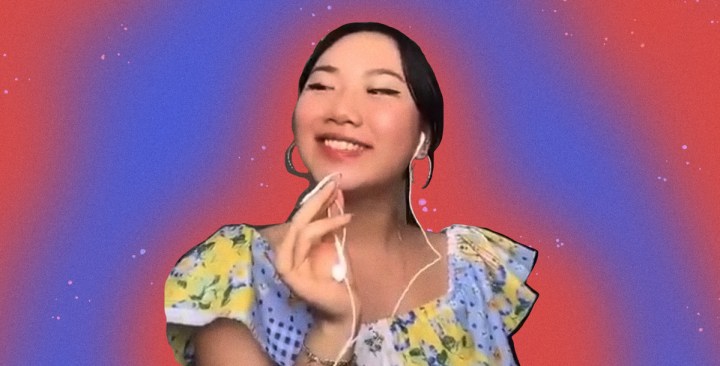Toma Nota: Asian Boricua TikToker Keishla Defends Her Identity

Keishla. Art by Stephany Torres for Remezcla
People of mixed cultures and races exist everywhere. Among them is TikToker Kiehsla (@keishlaheli), a Puerto Rican of Chinese heritage who is constantly asked about her background. Keishla’s videos addressing the topic have gone viral and the comments that followed show a widespread lack of understanding about the diversity of race in Puerto Rico and beyond.
Though born and raised in Borikén, Keishla is often asked where she’s from being that she’s visibly Asian. Her parents were born in China and later migrated to Puerto Rico, she explained. Some users, however, refused to accept. Remarks invalidating her identity from one user had her especially incensed.
“Lol u may consider her Puerto Rican but I don’t. Blood is more important than how she acts to me she can copy us but will never be us,” @tflore99 wrote.
Keishla’s response? “I respect your opinion, even though it’s a shitty opinion.”

Critics aside, plenty of fellow boricuas, Latines and others among her 52.7K TikTok followers have come to her defense. Support is spilling out on Twitter, too.
“There’s a whole ass history of Asians in Caribbean culture,” one user wrote. “Asians worked next to the slaves in the sugar cane fields in Cuba. Cuba has one of the oldest China towns in the Caribbean. So many Caribbean people have Chinese descent. Y’all don’t know how colonization work.”
Keishla, of course, is not alone. There are thousands of Chinese Puerto Ricans on the island. The most recent Census data reports Asians as .2% of the population, but others—like Puerto Rican academic and professor José Lee Borges—believe the count is much greater.

Chinese migration to PR was at a high in the late 1850s to 1882. Many fled war and economic devastation, and about 300,000 culminated their journeys in the United States. Labor exploitation ensued, and they built the Transcontinental Railroad. Next, folks got angry that Chinese people were “taking their jobs” (history repeats itself, huh?) and the Chinese Exclusion Act of 1882 was implemented to ban all Chinese laborers from entering the country. It was not repealed until 1943 and, even then, as well as the 22 years that followed, an extremely low cap of 105 controlled how many Chinese people were admitted onto the island annually.
Some of these Chinese immigrants went instead to the Caribbean, though—some first to Cuba, where they were incarcerated due to labor revolts, then to Puerto Rico, where they served their sentence in what was essentially slave labor, working in major infrastructure projects.
That’s the short version, anyway. You can learn more about Chinese migration to Puerto Rico in The Diplomat and Lee Borges’ writing.

People in Puerto Rico and anyone who visits will notice right away that there is a major population of Asian Puerto Ricans, and it’s particularly conspicuous in the restaurant industry: Chinese restaurants in Puerto Rico, which usually also serve items traditional of comida criolla, are a favorite among all. That’s not all, of course. Chinese people have contributed to Puerto Rico’s culture and economy in varied and significant ways.
Another comment on one of Keishla’s videos said “You speak better Spanish than me.” Is that condescending? Patronizing? For Keishla, that’s up to her. But for us, it reeks of ignorance.